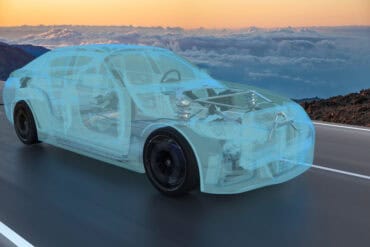
A peek at some real-world applications where real-time analytics provides the insights for intelligent decision making.
For every business problem, there’s an analytics-based solution. Of course, organizations need to ensure that they have the right data for building a workable solution that can both look forward and backwards.
That’s the gist of The Analytics Sandwich: Bringing People and Artificial Intelligence together to Unlock Business Value. The team of authors, led by Bernardo Almada-Lobo, professor with INSEAD, described a number of use cases for real-time analytics with which they were engaged. Their work was tempered by the need to integrate technology with strong business cases built on human interaction.
“There is no end to the possible problems that can be solved with advanced analytics,” the co-authors state. “The variety, volume, velocity, value, and veracity of the data we can now gather and analyze in unprecedented. In many ways, analytics has been democratized.”
An analytics sandwich
In line with the title of their book, they describe the opportunity as an “analytics sandwich” with several layers. There’s the technology and process layers, but “the top layer is people, involving them in the projects that are chosen and inspiring them to embrace data-driven decision making is fundamental. Wrap the two layers around a strategic objective and you make analytics practical and achieve results.”
The authors provide examples of real-time analytics solving complex business problems:
- Telecommunications company, finding the right time to contact each customer: “They had invested significantly in gathering information about their customer base but were unsure if they were making the best use of that data.” For starters, the company built a predictive model “to identify the ideal time to contact each customer,” Almada-Lobo and his co-authors explained. “To achieve this, a machine-learning algorithm, considering a large set of variables including customer profiling variables and former contacts made, delivers a propensity/affinity model of each point-in-time to a customer. In other words, give the probabilities of each customer answering a call through the day.” This was followed by a prescriptive model to “optimize the customer contact time and prioritize clients.”
- Consumer goods company, optimizing production and distribution planning: The company “struggled to device a tactical production plan that achieved the perfect trade-off between production and logistics costs between each one of its 350-plus products.” Through prescriptive analytics, the company simplified its planning processes, by helping the company to “plan in a structured and efficient manner in the medium term and better understand the capacity required in the production of each family of products.” This included a dashboard to monitor important indicators. “By considering production costs such as workforce machine functioning, and raw material spoilage as well as service-level and obsolescence costs, the company can now make data-driven decisions for several of its companies.”
- Alternative energy supplier, boosting equipment performance: A wind-energy provider needed greater predictability in managing expensive downtime experienced across its 600 wind farms employing 6,000 wind turbine generators. The issues that affected performance ranged from internal wear on the turbines to external events such as well as bird strikes, storms, and lightening. The company built a predictive and prescriptive model based on proportional hazard modeling to track such wear-and-tear and predict the need for maintenance. The data shows how “various factors impact the wind turbines’ components’ reliability, “like knowing how different ingredients affect a recipe’s taste.” The authors report the model delivered 75% accuracy in predictions,.
Artificial intelligence and advanced analytics “liberates leaders at every level to embrace a hybrid, best-of-both worlds approach approach where intuition is augmented by data-driven insights,” the authors stated. “Still, analytics also gets informed by business sense.”





























